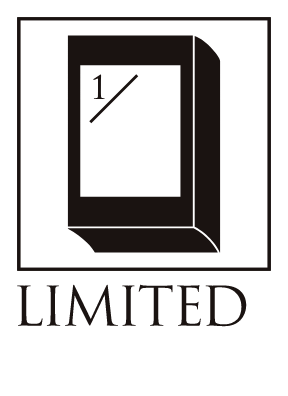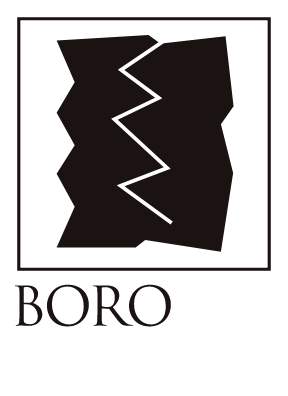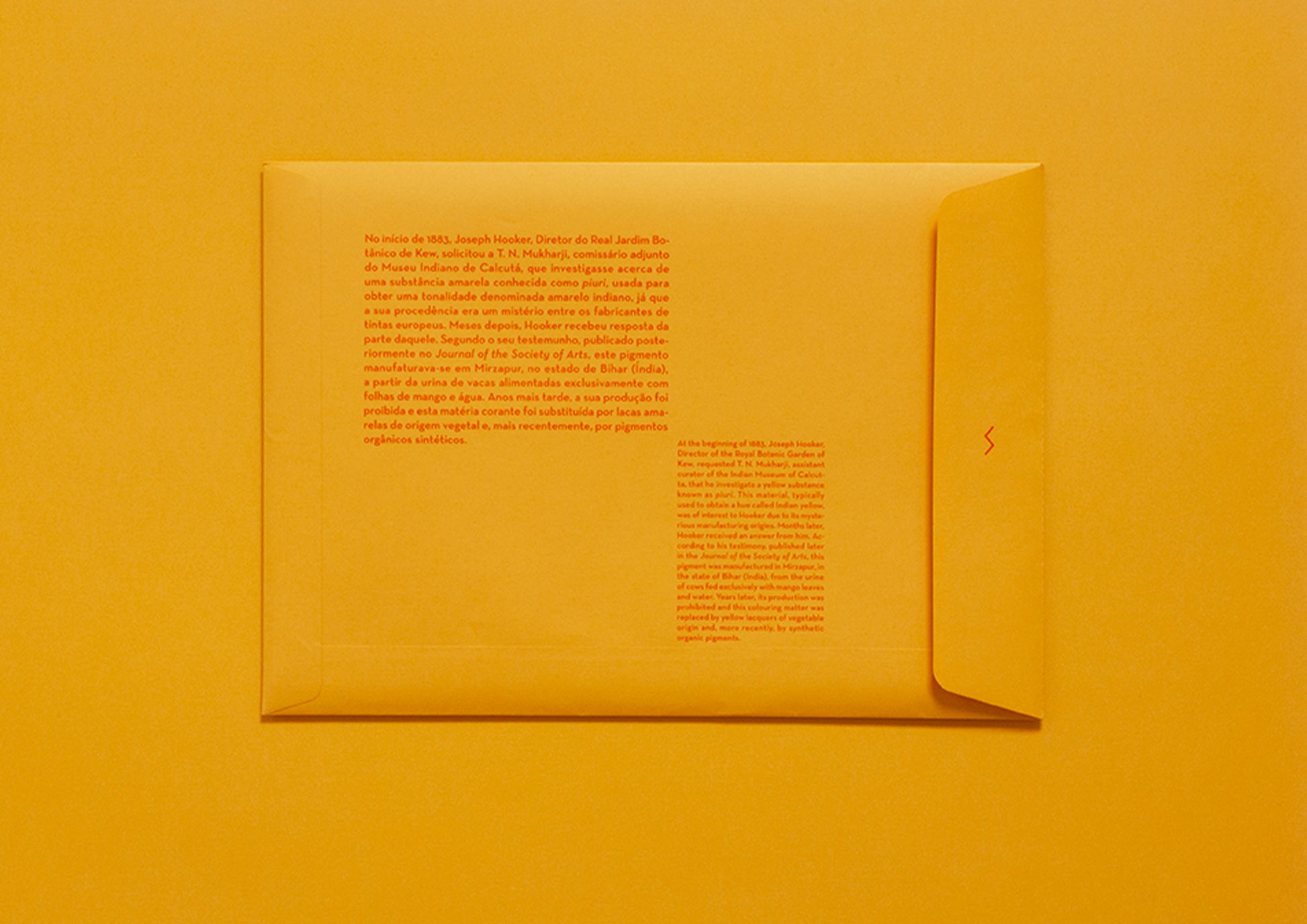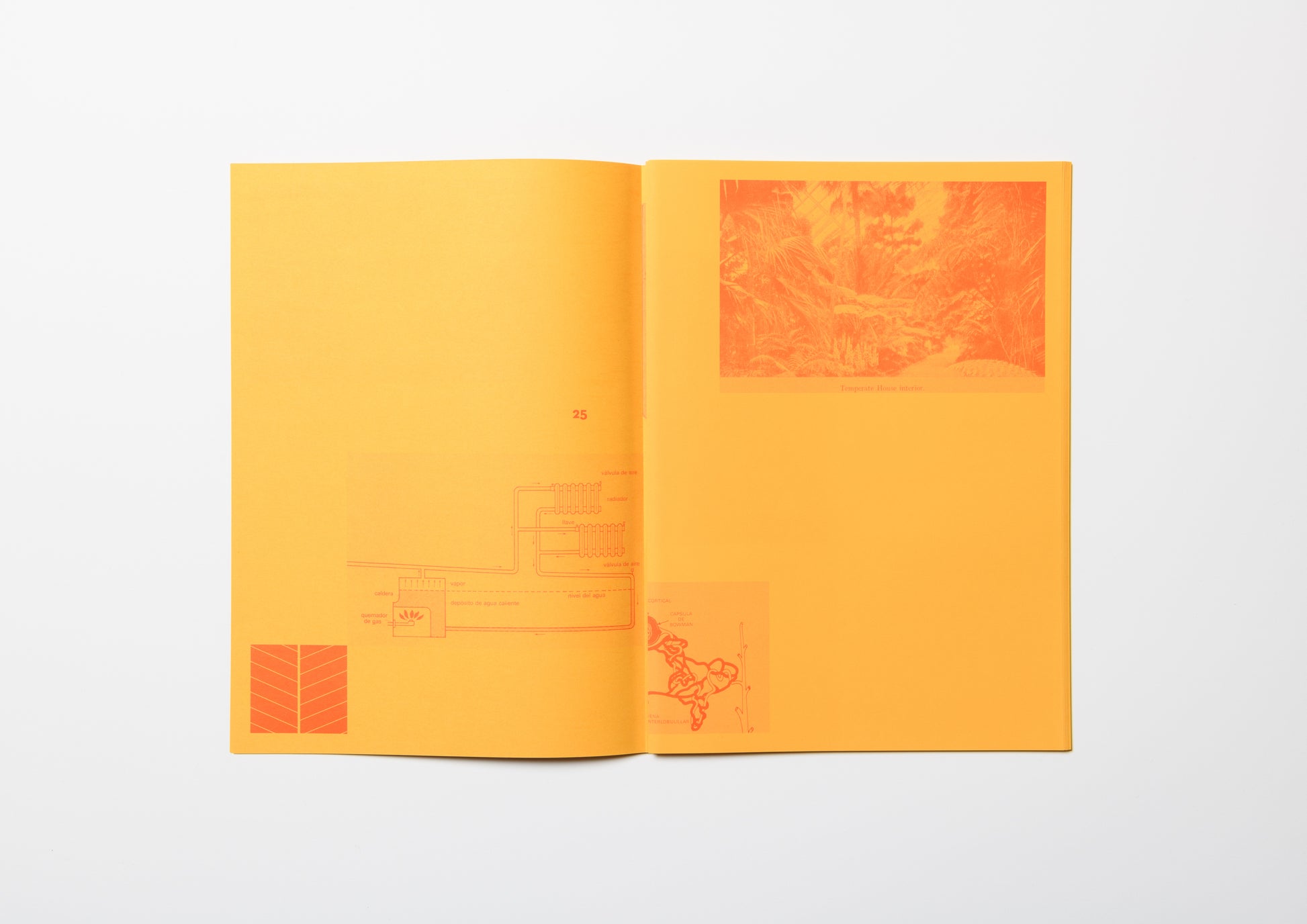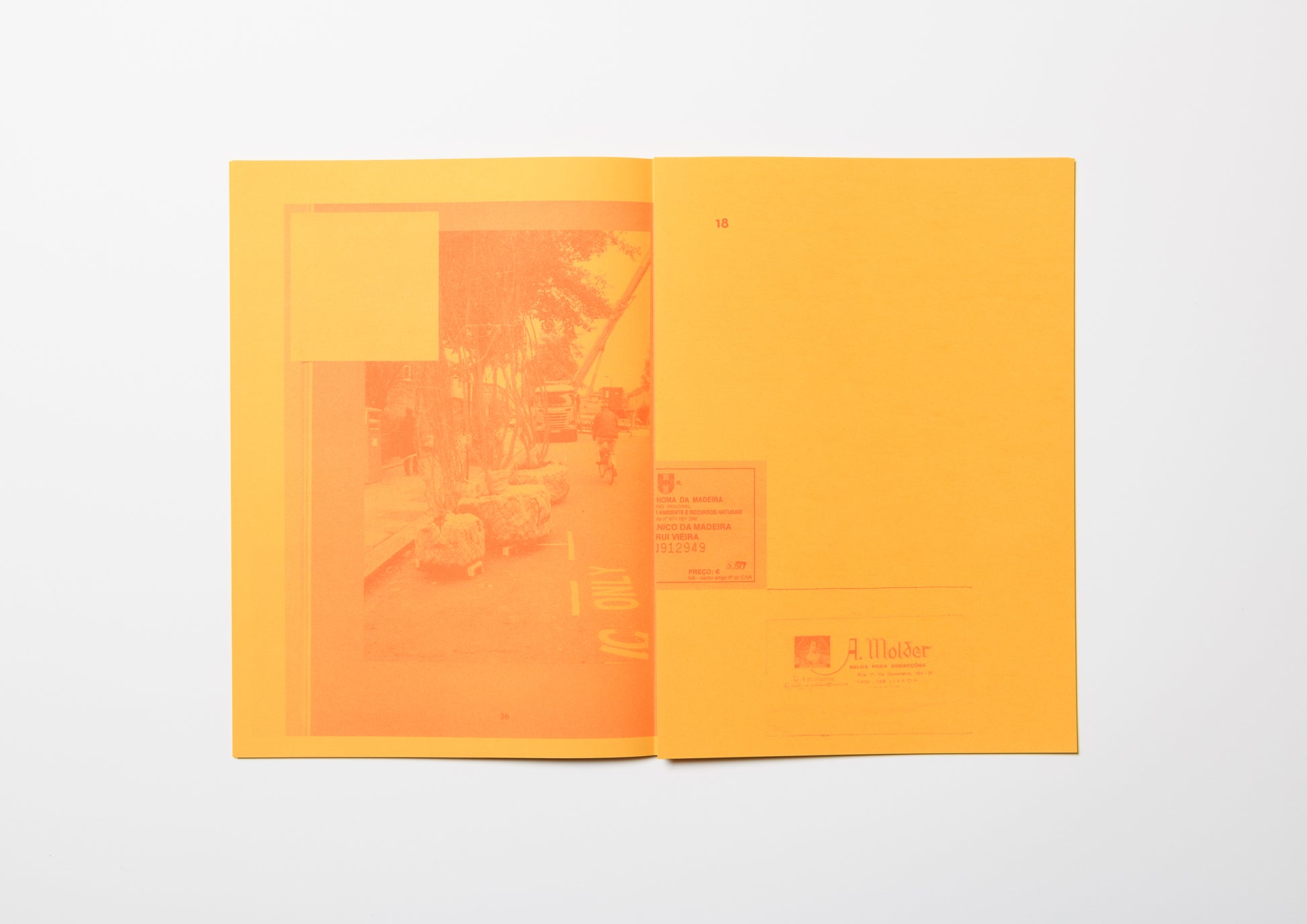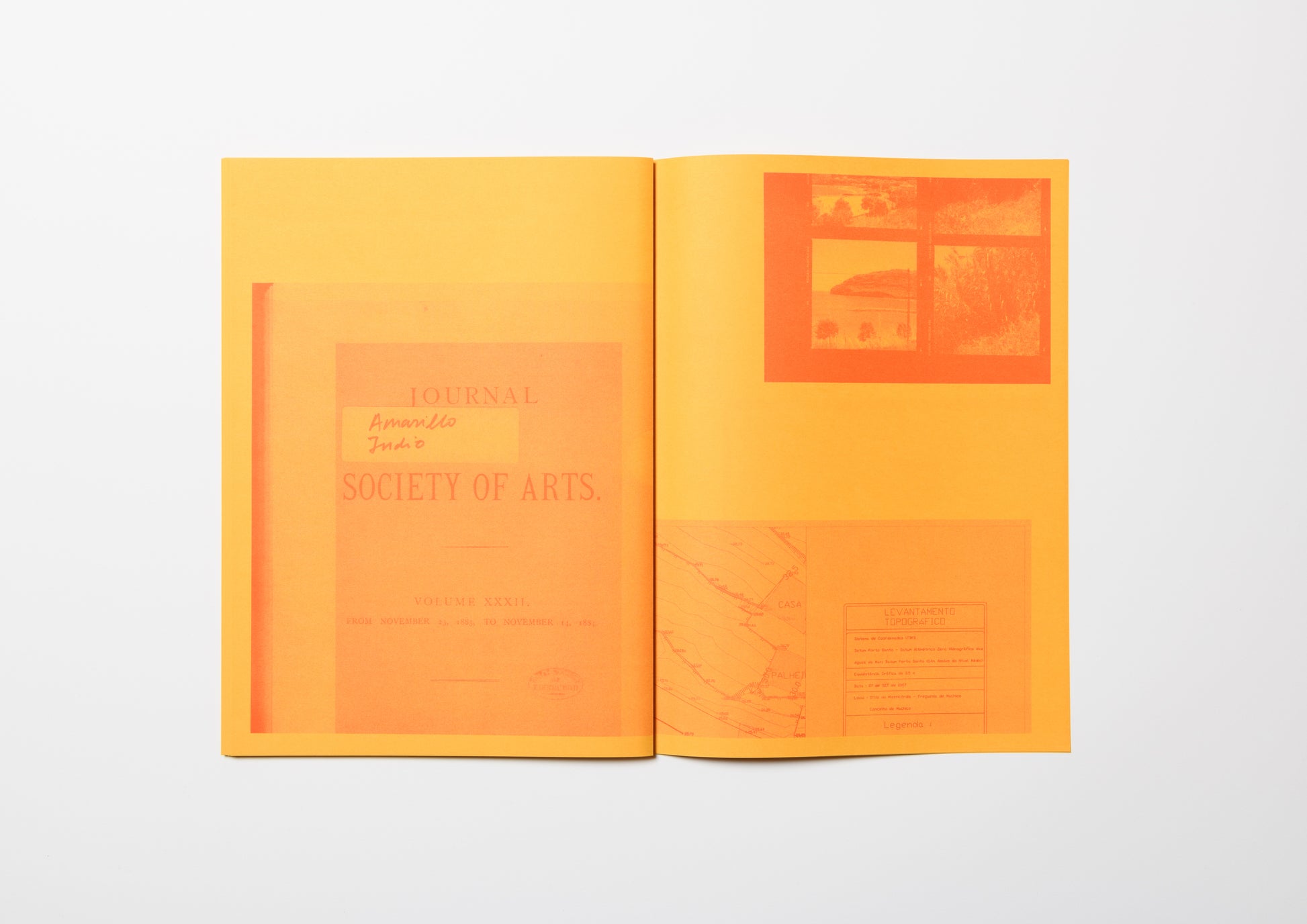Querido Amarelo
Bibliographic Details
- Title
- Querido Amarelo / Dear Yellow
- Artist
- MIGUEL ÂNGELO MARTINS
- Publisher
- Miguel Ângelo Martins and Raum Editions
- Year
- 2019
- Size
- Booklet: 304 x 215mm / Envelope: 324 x 229mm
- Weight
- 30g
- Pages
- 72 p
- Language
- Portuguese & English / ポルトガル語、英語
- Binding
- thread sewn binding / ソフトカバー
- Printing
- Risograph 1-ink (red)
- Materials
- Paper: 80, 115 g Sirio Color, Gialloro
- Edition
- 150
- Condition
- New
- ISBN
- 978-84-09-11247-0
Concept and Design: Miguel Angelo Martins / Proofreading: Isabel Santa Clara / Translation: Leticia Pérez Alonso / Printing process: Risography, 1-ink, Red / Typography: Neutra Text, Demi and Bold / Image credits: Sheet #3 (above) / Indian Court at the Melbourne International Exhibition, 1880. © La Trobe picture collection,
Around Indian Yellow
The Adventures of Miguel
This book was produced for the exhibition "Em Viagem" at the Quinta Magnólia Garden in Madeira Islands, Portugal, in 2019, and we envy Miguel for being able to embark on such a daring adventure on the theme of plants and in the boat called a book! I can't help but envy Miguel's ability to embark on such a daring adventure.
The title "Querido Amarelo" is "Dear Yellow" in English. The theme of the book is the story of a great adventure involving a yellow pigment known as "Indian Yellow". The work is a document that weaves together history, research findings, and Miguel's personal quest by identifying similarities between the information Miguel gathered over the course of two years and his personal archives.
The color of the paper is, of course, similar to Indian yellow, and the red ink follows the shade of red frequently used in Indian festivals. The book is not bound in any way, and each sheet is unbound, so that it can be hung on a wall to be admired, or spread out like a newspaper to be read. The bundles of papers are placed in a yellow envelope that looks like a research report that has been crumpled up.
"In 1883, Joseph Hooker, director of the Royal Botanic Gardens at Kew in England, asked T.N. Mukherjee, assistant curator of the Indian Museum in Calcutta, to investigate a yellow substance called Piuri. This substance is usually used to obtain the color tone known as Indian yellow, but the origins of its manufacture were a mystery, and Hooker had long been interested in it. A few months later, Hooker received an answer from T.N. Mukherjee. According to his testimony, later published in the Journal of the Society of Arts, the pigment was manufactured in Mirzapur, Bihar, northeastern India, from cow urine fed only mango leaves and water. A few years later, its production was banned and this coloring agent was replaced by yellow lacquer of vegetable origin, and more recently by synthetic organic pigments."
A few words should be added about Indian yellow. This pigment has long been manufactured in India and was exported to Europe around the 15th century. Vermeer is said to have liked it, and perhaps the famous "The Milkmaid" might not have been completed without the urine of a cow that had eaten mango leaves. However, the cows that were fed only mango leaves in order to produce Indian yellow became excessively malnourished, and most of them died of emaciation at a young age. Public knowledge of the cruel production process led to condemnation in many parts of the country, and after 1908 the market was banned, and today synthetic organic pigments are produced that are formulated to resemble the color.
This is a book unique to Miguel, who continues to have an unusual love and interest in ink. Is it my imagination that I can even smell the aroma of India when I open the yellow
Regular price
$61.00 USD
Regular price
Sale price
$61.00 USD
Unit price
per


